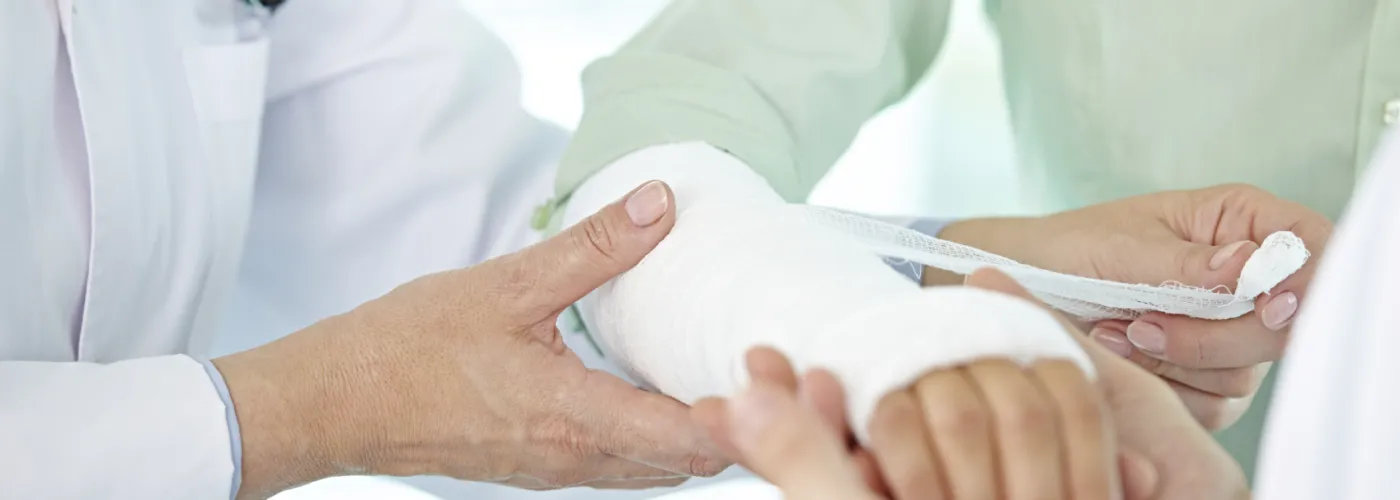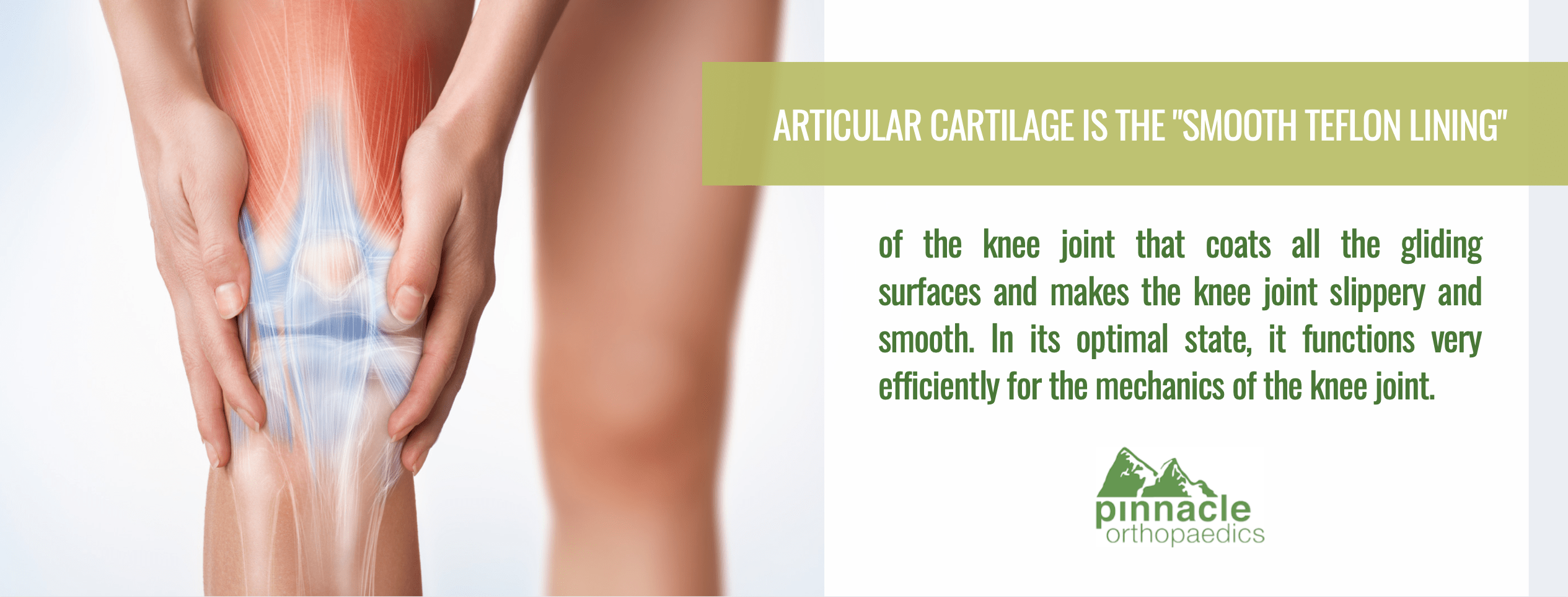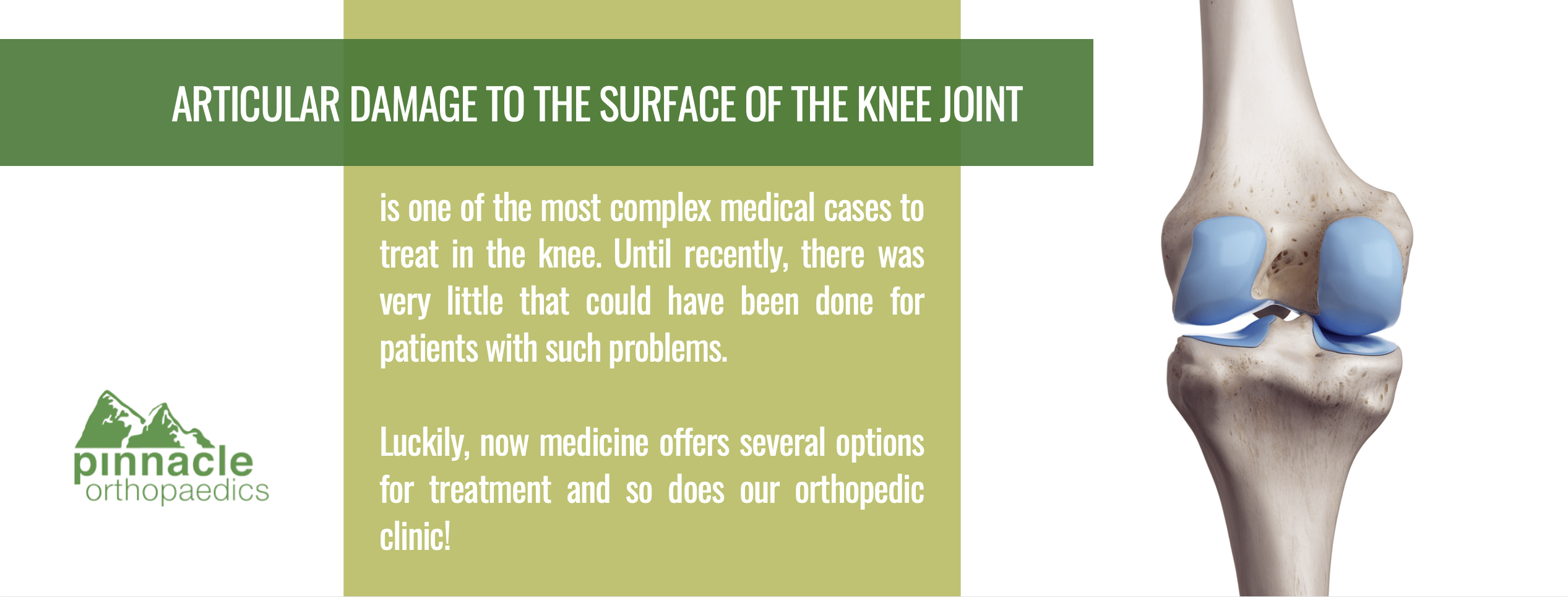
Cartilage Transplant
Cartilage transplant
Many people have heard of torn cartilage and most people tend to think of it as damage to the shock absorber or meniscus cartilage in the knee. This can be confusing and misunderstood since the difference between types of cartilage isn't common knowledge.
Articular cartilage is the "smooth Teflon lining" of the knee joint that coats all the gliding surfaces and makes the knee joint slippery and smooth. In its optimal state, it functions very efficiently for the mechanics of the knee joint.
Unfortunately, it can be damaged, and when this smooth articular cartilage is damaged, it can be a much bigger problem than when the C-shaped shock absorber - meniscus cartilage - is torn.
History
Until recently, the treatment of articular cartilage defects has been remarkably poor. The most that could be done was to shave it down with mechanical instruments in an attempt to smooth it out. Unfortunately, very little could be done to repair the defect caused by an injury/trauma or degeneration.
Occasionally, the damaged area would be drilled with a wire to try and promote bleeding. Doctors hoped it would create a fibrous clot that would smooth over to form scar tissue which would be better than having a defect in the cartilage. This healing technique was quite unsophisticated, but it was better than nothing. The idea was to pierce the bone plate just underneath the cartilage and allow cell migration by bleeding into the area. In its modern form, this technique is referred to as "microfracture". Improvement in daily activities can be expected in about 2/3 of patients when performed at its best.
Abrasion chondroplasty is an easier technique to understand. A high-speed burr is used on the roughened area, particularly if a hardened bone is formed. Once again this high-speed burr is intended to help promote the formation of scar tissue, but it cannot be expected to form normal articular cartilage.

Autologous Chondrocyte Implantation (ACI)
Originally developed in Sweden, ACI is an advanced technique where the goal of the surgery is to transplant cells into the area which can be expected to form normal hyaline cartilage. Hyaline cartilage is a specific type of cartilage that is usually present in normal articular cartilage. With this technique, a biopsy is taken during the first arthroscopic surgery (biopsy is a medical extraction of sample cells or tissues for examination to determine the presence, cause, or extent of a disease).
A small piece of cartilage is removed from a non-critical area of the knee joint during the biopsy. It is then sent to a laboratory where the tissue is cultured to produce many more chondrocytes (cartilage cells) until there is enough to transplant back into the knee joint.
The patient is then taken back into surgery where an operation is performed through an open incision. A liquid form of the cartilage, which has been grown in the lab, is placed by a syringe underneath a patch. The patch is then sealed over completely and the patient must remain non-weight bearing for an extended time until the knee is safe to bear weight.
This technique is usually reserved for patients who are aged under 55 and for lesions that are at least 2 square centimeters in size. It is not always a good operation for lesions on the patella (kneecap) but can be very successful for lesions of the femoral condyles. Any ligament instability of the knees has to be corrected first and any mal-alignment deformities such as geno varus (bow-legged) must also be corrected in the first place.
This operation is contraindicated in diseases such as rheumatoid arthritis and severe osteoarthritis. If the patient is markedly obese or has other medical contraindications, then he or she may not be accepted as a candidate for this treatment.
Autologous Chondrocyte Implantation (ACI) has achieved excellent long term results, both in terms of cartilage repair and helping patients returning to previous activity levels. The records show up to 85% improvement at 12 months. The results improve further with time.
The high success rate and remarkable recoveries after the treatment are due to the fact that it is the patient's own cartilage cells that are implanted back into the knee joint. The cells are grown and cultured in the laboratory to multiply and injected into the knee allowing regeneration of the hyaline cartilage without the risk of material rejection or side effects.
Osteochondral Autograft Transplantation (OAT)
This procedure is also known as an OATS procedure or mosaicplasty. This procedure is usually used on smaller lesions between 1-2 square centimeters. Again, the goal is to achieve normal articular hyaline cartilage with this operation.
With this particular technique, special instruments are used to harvest an area of hyaline cartilage from a non-critical area of the knee. This cartilage is immediately transplanted into the area of the damaged cartilage without any intervening growth period in a laboratory. This means that the size of the transplant is limited by the amount of cartilage that can be removed from the non-critical area of the knee. This is why it can't be performed for lesions much more than 2 square centimeters in size.
The advantage is that it can be performed arthroscopically in one sitting. The grafts are harvested by hollow tubes that are used to drill over the area that is called a donor site. Then, the damaged area is drilled out and the tube of bone and cartilage is transplanted into the damaged area. This operation has the advantage of a much shorter recovery period and it removes the necessity for two operations.
Postoperative Course
Depending on the type of surgery, the post-op courses differ.
With the microfracture technique, the patient may be required to be non-weight bearing for 6 weeks but otherwise recovers relatively quickly.
With the OATS type of procedure, where the cartilage is transplanted all in one sitting, the patient again is going to be non-weight bearing for about 6 weeks but afterward recovers quite quickly.
The recovery period for the Autologous Chondrocyte Implantation technique, where the cartilage is grown in a lab, is much longer, however, it must be appreciated that this technique is used for more complex medical cases and bigger lesions. Also, the ACI technique has to be performed through a relatively large open incision compared to the other two operations.

Summary
Articular damage to the surface of the knee joint is one of the most complex medical cases to treat in the knee. Until recently, there was very little that could have been done for patients with such problems. Luckily, now medicine offers several options for treatment and so does our orthopedic clinic near you!
The risks associated with all of the aforementioned procedures as well as their limitations need to be appreciated and understood. While the final treatment results can't be promised with certainty or guaranteed, the procedures do offer patients a chance of having a healthy knee joint again and allow them to return to normal activities and regain their fitness.
It is time to conclude the cartilage transplantation topic quoting one of the most famous orthopedic surgeons in the world - Dr. Henry Mankin:
"It should be clear that cartilage does not yield its secrets easily and that inducing it to heal is not simple. The tissue is difficult to work with, injuries to joints are a risk, whether traumatic or degenerative, are unforgiving, and the progression to osteoarthritis is sometimes so slow that we delude ourselves into thinking that we are doing better than we are. It is important, however, to keep trying."
Looking for an "orthopedic surgeon near me"? Look no further!
At Pinnacle Orthopaedics, we are equipped with state-of-the-art equipment needed in every step of the treatment process. Our Fellowship Trained Specialists have years of experience in dealing with various traumatic and degenerative orthopedic cases, and provide our patients with the highest quality orthopedic care.
Our orthopedic team performs non-surgical and surgical procedures, treats sports injuries and repairs trauma to the knee, using the most advanced knowledge, treatment and methods. Rest assured, that you will be guided right from assessment and diagnosis to treatment and rehabilitation, to ensure your full recovery.
You will find us in five convenient locations:
If you are looking for an orthopedic surgery or wish to consult a member of our staff, please contact our headquarters:
Phone: 770-427-5717
Fax: 770-429-8520
Visit us at 300 Tower Road, Suite 101, Marietta, GA 30060
Make an enquiry on our contact page
The material contained on this site is for informational purposes only and DOES NOT CONSTITUTE THE PROVIDING OF MEDICAL ADVICE, and is not intended to be a substitute for independent professional medical judgment, advice, diagnosis, or treatment. Â Always seek the advice of your physician or other qualified healthcare provider with any questions or concerns you may have regarding your health.